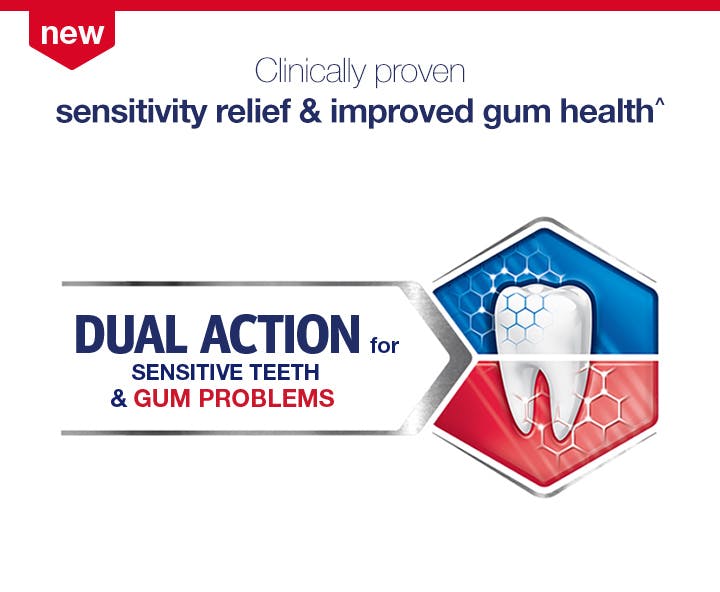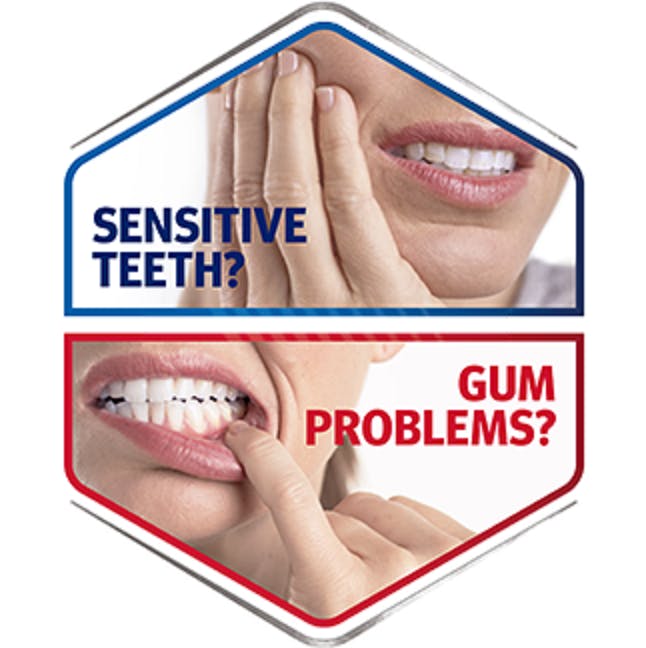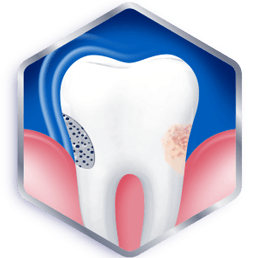


Discover how our new toothpaste for
sensitive teeth & gum problems works

Tips to help manage sensitive teeth & gum problems

Want to find out more about the signs and causes of sensitivity & gum problems?
If you experience a short sharp sensation when you eat or drink something cold or hot and you notice gum problems when brushing, you're not alone.
Over half of people with sensitive teeth also report signs of gum problems.*
Find out more about what is causing these two symptoms and why you should take action.
^with twice daily brushing
+In laboratory tests compared to a standard flat trim toothbrush
*GSK data on file, Ipsos




